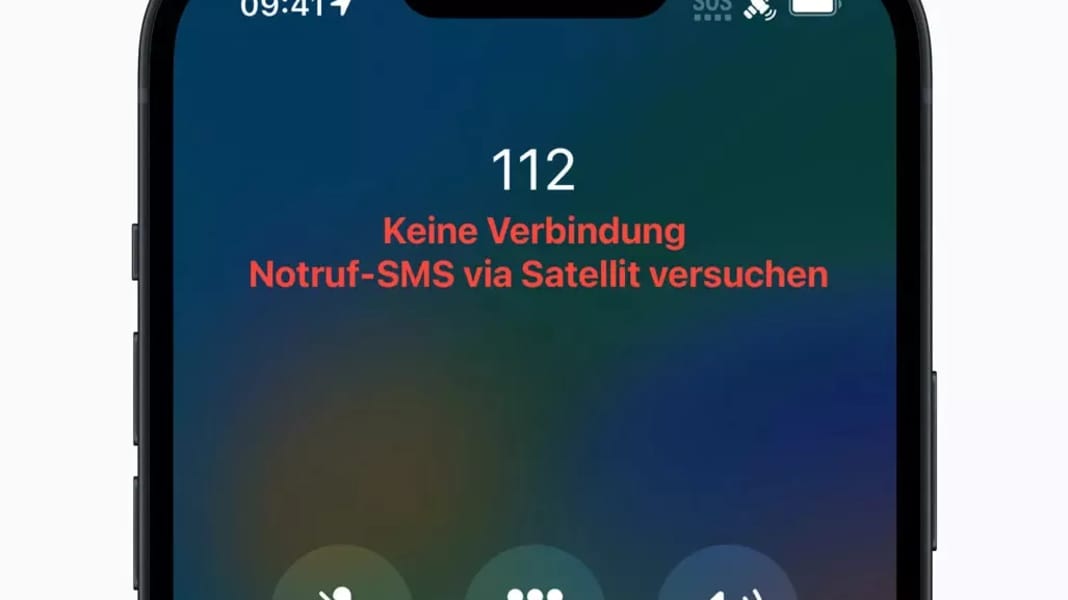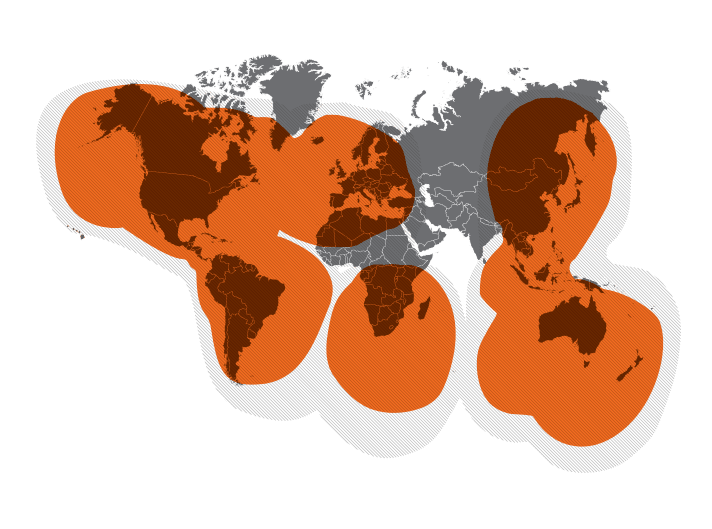Communication: How the iPhone 14 can also call for help at sea via satellite
Jochen Rieker
· 03.01.2023

The IT company based in Cupertino, California, has once again demonstrated its technological leadership. All models in the new iPhone 14 series have a satellite-supported emergency call function. It was first activated for the USA in November and has also been available to users in Germany, France, England and Ireland since mid-December. Other countries are to be added gradually.
Emergency SOS" is a text-based notification function that is either sent directly to rescue control centres or forwarded via emergency specialists trained by Apple.
Until now, it was unclear whether the service also applies at sea. And although Apple does not provide any specific details about the satellite service's coverage of the usual sea areas, a spokesperson confirmed to our sister magazine YACHT that leisure boats can rely on the new safety function, at least to a limited extent.
Emergency call SOS via satellite works in coastal waters where rescue services are active."
Nevertheless, he qualified: "SOS is currently not available via satellite in international waters." This restraint seems understandable. The manufacturer does not want to expose itself with promises that could lead to liability claims in case of doubt, especially at the launch of a service that could be critical in an emergency.
Technically at least, the range of satellite communication is far greater. Apple's SOS emergency call is based on the Globalstar network, which does not include the polar regions, but covers around 80 per cent of the world - including almost the entire North and Baltic Seas, large parts of the Mediterranean and parts of the North Atlantic.

We and our sister magazines will carry out coverage tests in the near future. But even if the function is initially limited to coastal areas, the iPhone 14 can help to at least partially fill the sometimes considerable gaps in mobile phone networks at sea.
"Emergency SOS makes emergency communication via satellite more accessible, which is very interesting," says Gary Machado, head of the European Emergency Number Association. "In practice, this means that many more people will be able to reach 112 if they have no mobile phone reception and need urgent help. We are confident that this will save many lives and be a great help to the emergency services in dealing with what are often very complicated operations."
How emergency call SOS works via satellite
Activation is simple: simply press and hold both the power button and the volume button. Alternatively, you can also press the power button five times quickly. The iPhone 14 then guides the user through an easy-to-use interface to set up a satellite connection if no mobile network is available.
A few short questions help to provide vital information with just a few taps, which is transmitted to the dispatchers in the first message so that they can quickly get an idea of the situation and the user's location. The iPhone then graphically shows users where they need to point the device to establish a connection. This is important because the Globalstar satellites orbit the earth at high speed and are therefore not always easy to reach. Once the connection is established, the emergency call is sent automatically.
This message contains answers to questions about the location, the number of casualties, but also information about the location, the battery status of the iPhone and the emergency passport, if this is stored. Like the follow-up messages, it is forwarded directly via satellite to dispatch centres. The transcript can also be forwarded to the user's emergency contacts to keep them up to date, although this requires an iPhone with operating system version iOS 16.1 or higher and the use of iMessage.
Apple has developed its own components and software that enable the iPhone 14 to connect to the frequencies of the Globalstar satellites without the need for a bulky antenna. In addition, a text compression algorithm has been programmed that reduces the average size of messages to a third so that transmission is as fast as possible.
Demo mode for practising the emergency call function
With Emergency SOS via satellite, messages can be sent or received in just 15 seconds in good conditions. A dedicated demo programme offers first-time users the opportunity to test the connection by logging on to a satellite within range without calling the emergency service. This allows them to familiarise themselves with the service at their leisure.
In addition to emergency calls, the new function also allows you to share your location via satellite if no mobile network is available. To do this, open the "Me" tab in the iPhone "Where is?" app, swipe up to select "My location via satellite" and then tap "Share my location". The satellite connection of the iPhone 14 also works with other safety functions of the device and the Apple Watch, such as accident detection and fall detection.
The "Emergency SOS via Satellite" service is available to all owners of the new iPhone 14 models from Apple. It is free of charge for the first two years after activation in Germany, i.e. until December 2024. It is not yet known what fees will be charged for use after that.
The investment volume shows just how important the service is to the IT company. Apple has earmarked 450 million euros for the function. Up to 80 per cent of Globalstar's capacity is to be used for SOS emergency calls via satellite in the long term. This will make the network operator, which has always been somewhat overshadowed by its competitors Inmarsat, Iridium and Thuraya, a key player in satellite communication.
Of course, Apple's iPhone extension is not a complete replacement for Iridium phones or GPS trackers such as Garmin's inReach, which can also send text messages via satellite. This is because the battery life is shorter than that of dedicated satellite devices, and private messages about the crew's condition cannot be sent for the time being.

